How do you increase student achievement?
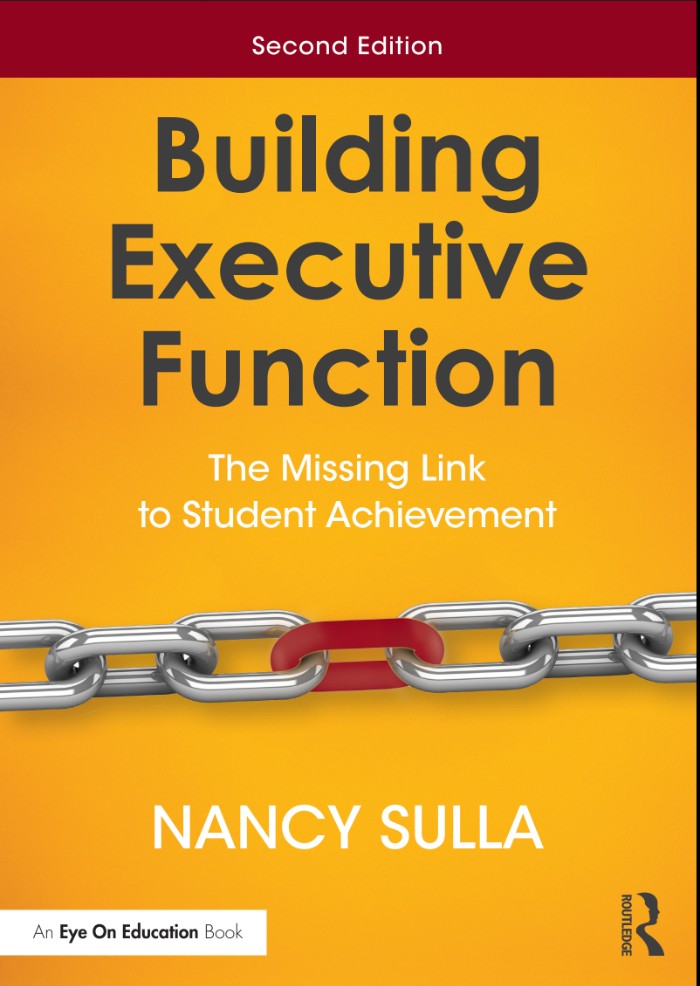
The key to student achievement is the brain’s fluency — ability to process and use information quickly. Educators clamor to provide top-notch lessons and resources for students, but if students lack executive function, even the best materials won’t produce the desired results. If students haven’t developed the brain-based skills to focus, catch and correct errors, identify cause-and-effect relationships, and more, they can’t make sense of lessons. Executive function is the missing link to student achievement. But how can you develop this in the classroom? This book is a veritable how-to, filled with activities, structures, and strategies to use immediately in the classroom. The 2nd edition of this best-selling book has been updated to include addressing the needs of ELLs and using AI.
Click here to read chapter 1 of Building Executive Function: The Missing Link To Student Achievement by Dr. Nancy Sulla
Doing a book study? Use these discussion questions for Building Executive Function: The Missing Link to Student Achievement!
Building Executive Function: The Missing Link to Student Achievement by Dr. Nancy Sulla is available through Routledge or Amazon.com
How do you pursue higher student engagement, satisfaction, and achievement?
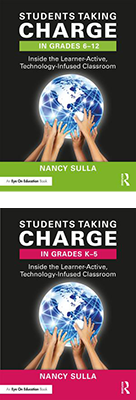
These two second editions of Students Taking Charge show you how to create student-driven classrooms that empower learners through problem-based learning and differentiation, where students pose questions and actively seek answers. Technology is then used seamlessly throughout the day for information, communication, collaboration, and product generation.
You’ll find out how to:
- Design an Authentic Learning Unit, which is at the core of the Learner-Active, Technology-Infused Classroom™, aimed at engaging students;
- Design and implement the structures needed to support its implementation and empower students;
- Build the facilitation strategies that will move students from engagement to empowerment to efficacy.
The K–5 edition offers a more detailed look into elementary school implementation and the new 6–12 edition into secondary school implementation. With their practical examples and step-by-step guidelines, you’ll be able to use this book to start designing your innovative classroom immediately!
Click here to read chapter 1 of Students Taking Charge In Grades K-5 or Students Taking Charge In Grades 6-12 by Dr. Nancy Sulla
Doing a book study? Use these discussion questions for STC K-5 and STC 6-12!
Students Taking Charge In Grades K-5 by Dr. Nancy Sulla is available through Routledge or Amazon.com
Students Taking Charge In Grades 6-12 by Dr. Nancy Sulla is available through Routledge or Amazon.com
How do you lead a school to create innovative, student-driven learning environments?
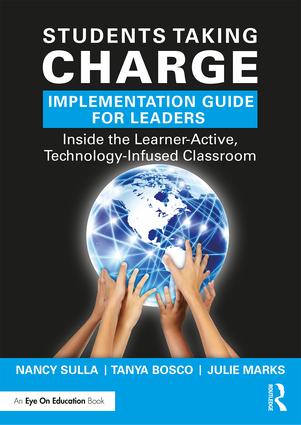
In this book, Nancy Sulla and her co-authors provide a powerful framework for designing Learner-Active, Technology-Infused Classrooms™, which they have implemented in districts across the country. You’ll find out how to help teachers make their classrooms more personalized, rigorous places in which students take ownership of their work, pose high-level questions, work on problems together, and actively seek answers. Each chapter provides a wide variety of practical tools for implementation and teacher observation to help you get started.
Click here to read chapter 1 of Students Taking Charge Implementation Guide for Leaders by Dr. Nancy Sulla, Tanya Bosco, and Julie Marks
Students Taking Charge Implementation Guide for Leaders by Dr. Nancy Sulla, Tanya Bosco, and Julie Marks is available through Routledge or Amazon.com
How can the pandemic provide a blueprint for change?
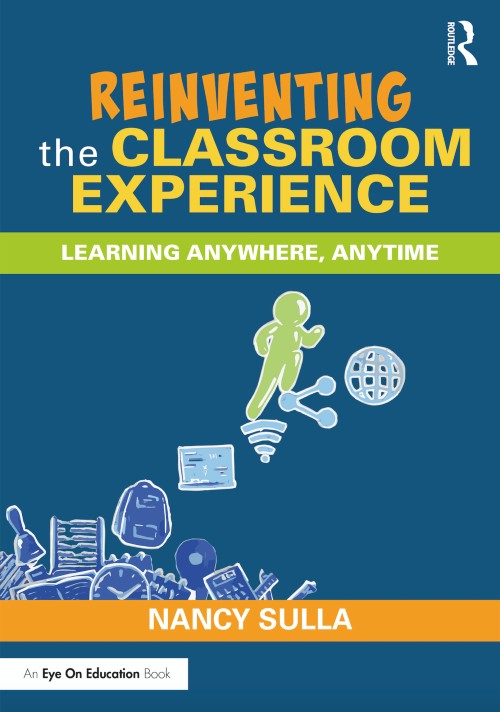
During the pandemic, schools using Dr. Sulla’s Learner-Active, Technology-Infused Classroom (LATIC) framework told her that LATIC prepared them for this very moment: teachers and students shifted to work from home and didn’t miss a beat. Inspired by the stories from administrators and teachers, Sulla provides new ideas and insights from pandemic-teaching experiences and urges schools to reinvent classrooms to promote the ability for students to learn anywhere, anytime. Through various structures and strategies aimed at putting students in charge of their own learning, teaches can design “uninterruptible” learning.
Click here to read chapter 1 of Reinventing the Classroom Experience: Learning Anywhere, Anytime by Dr. Nancy Sulla.
Reinventing the Classroom Experience: Learning Anywhere, Anytime by Dr. Nancy Sulla is available through Routledge or Amazon.com
How do you prepare students to become problem-finders, innovators, and entrepreneurs in a global society?
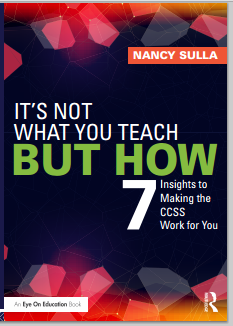
Standards chart a pathway to success, yet we know that checking off each standard one by one will not achieve the kind of results we want. This powerful book by bestselling author Dr. Nancy Sulla has the answers. She explains how teachers can bring students to deeper levels of learning by shifting from the what to the how of the standards. Using the CCSS (the model for most state standards), she offers seven insights that you can use to achieve standards-based teaching in a more meaningful way, to bring all of your students to true understanding and application. Throughout the book, you’ll find a variety of practical examples from across the curriculum, as well as “Your Turn” opportunities to help you try the ideas in your own classroom. The future may not be easily defined, but it can be shaped by teachers who are right now preparing the next generation of world citizens.
Click here to read chapter 1 of It’s Not What You Teach, But How: 7 Insights to Making the CCSS Work for You by Dr. Nancy Sulla
It’s Not What You Teach But How: 7 Insights to Making the CCSS Work for You by Dr. Nancy Sulla is available through Routledge or Amazon.com
